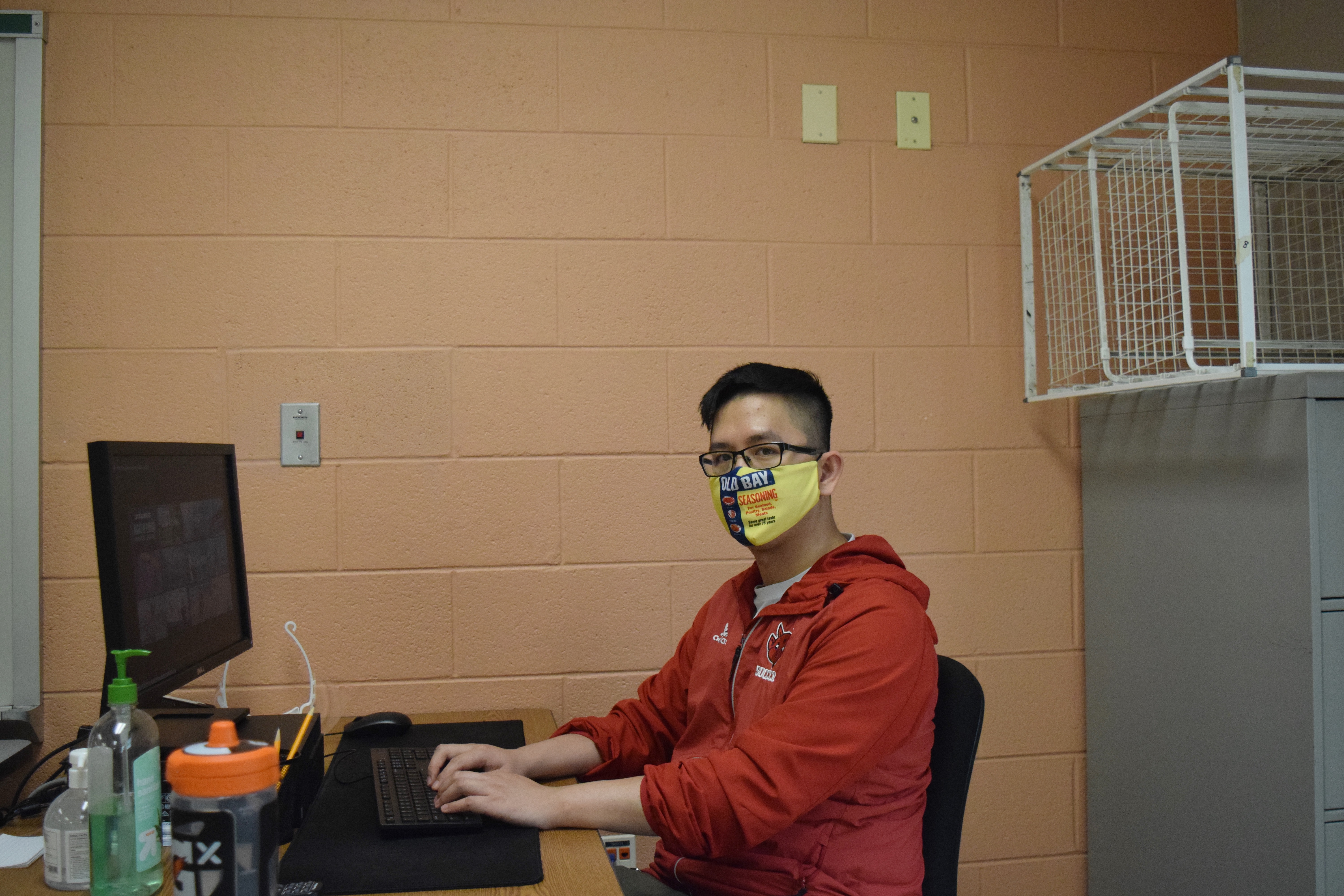'I'm very afraid of going out'
The aftershocks of the surge in violence against the AAPI community.
After the shooting in Atlanta that left eight people, six of whom were Asian women, dead, sophomore Elina Lee was afraid to go for training runs in her Potomac, Md. neighborhood. "My mom… was telling me how I can't go outside by myself anymore [for runs]… I would have to find someone to go with me," Lee says.
Yoko Zoll, who teaches ESOL and Japanese Language at Blair, finds herself being extra vigilant when she walks around her neighborhood or shops for groceries. "I am very afraid of going out… If somebody approaches, I just go away to make a distance… I have been very carefully paying attention to what other people are doing since the incident in Atlanta," Zoll says.
Hate crimes against the Asian American and Pacific Islander (AAPI) community have spiked during the COVID-19 pandemic. The organization Stop AAPI Hate reported 3,795 incidents during the first eleven months after the U.S. declared COVID-19 a national emergency (March 19, 2020 to Feb. 28, 2021). Asian American women reported hate incidents over two times more than men, adding to Zoll and Lee's concern for their own safety.
The organization noted that 3,795 is undoubtedly an underrepresentation of the true scale of violence and hate against Asian Americans, since many incidents go unreported. "Most Asians don't report because they don't trust the police… So there should be more numbers. But we tend to just get together to protect ourselves instead of just going public to assert [our] rights," Zoll says.
The surge in attacks against Asian Americans was fueled by Anti-Asian racism and xenophobia; a notable example is former president Donald Trump's repeatedly calling the coronavirus the "China virus" in tweets and official press releases. Anti-Asian rhetoric in this country has existed since the first Chinese workers immigrated to the U.S. in the 1850s, but it has exploded this past year with devastating consequences.
Even in Montgomery County--which prides itself on its diversity and progressive politics--there is work to be done to stem the hostility against Asian Americans. The stereotypes of the Asian American as the "model minority" and "perpetual foreigner" permeate everyday life.
Blair math teacher Tung Pham notes how the model minority myth hurts his Asian American students' education. "A lot of people have this expectation for my students like, 'Oh, because they're Asian Americans, they must be smart and must be good at math,' and in fact, they're struggling in the class," he says.
Lee, like many Asian American students, lives with the academic pressures that the model minority myth creates. "[It] is really harmful to us because for those of us who don't reach the expectation, we end up disappointing our parents and our mental health suffers because of that. It's also harmful to the people around us because we're expected to do better than them. So if other people ended up doing better than us, they might get accused of cheating or just academic dishonesty," she says.
When Lee has a problem with a school assignment, she rarely goes to her teacher first for assistance. "[I] don't try to reach out to get teachers' help most of the time. If it's something small, I would ask my friends first instead of reaching out to the teacher, and I feel like it's a problem," she says. The model minority myth burdens Lee with the expectation to excel in all her classes while discouraging her from seeking support when she needs it.
Not only does the model minority myth make it more difficult for Asian American students to seek academic support, but it creates division between Asian Americans and other marginalized communities.
"There are certain racial stereotypes about how Asian Americans are hardworking and about how they're rich… it's not the case. Even within the Asian American community, there is a large discrepancy and disparity about socioeconomic status… It creates this wedge between minority groups fighting for the same thing, which is [that] we want to be treated equally," Pham says.
Lee sees a similar challenge with regard to the division that the model minority myth creates between marginalized communities. "When two minorities begin fighting with each other, White supremacy prevails… It would be helpful if we [Asian Americans] could somehow advocate in a way that doesn't step on other movements, but it also brings attention to us," Lee says.
This phenomenon that Lee described is known as "last place aversion." To use the analogy of society as a ladder, people have a self-preservation instinct to avoid being on the bottom rung. Those near the bottom jockey for position amongst themselves instead of working together to dismantle the hierarchy itself. This conflict between marginalized groups benefits those who are already at the top of the social hierarchy, strengthening White supremacy.
In addition to the model minority myth, the stereotype of the "perpetual foreigner" is familiar to many Asian Americans. This can manifest itself in questions like, "Where are you really from?"
This stereotype paints Asian Americans as the "other," making it easier to justify violence towards them. This stereotype helped the U.S. government to pass the Chinese Exclusion Act of 1892;
Helped them forcibly relocate and incarcerate 120,000 Japanese Americans during World War II;
Helped Ronald Ebens and his stepson, Michael Nitz, bludgeon Vincent Chen to death with a baseball bat on a summer night in 1982;
Helped Antoine Watson murder Vicha Ratanapakdee in broad daylight outside his home in San Francisco in Jan. 2021;
Helped Robert Aaron Long shoot eight people--six of them Asian women-- to death in Atlanta, Ga. because he "had a really bad day."
Myles Feingold-Black. Hey! I'm Myles [he/him], and I'm a Editor-in-Chief of SCO along with Tharindi Jayatilake. More »
Comments
No comments.
Please ensure that all comments are mature and responsible; they will go through moderation.
